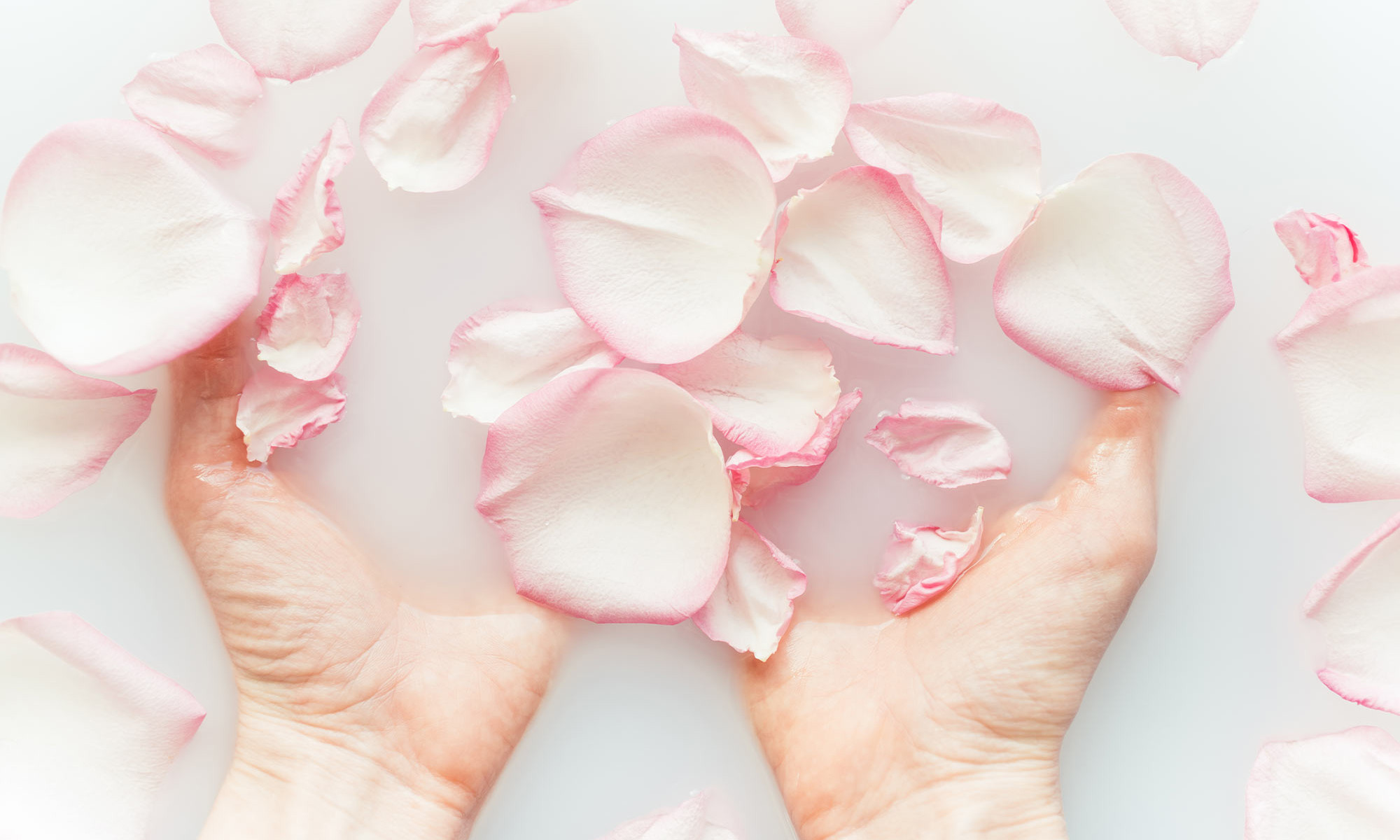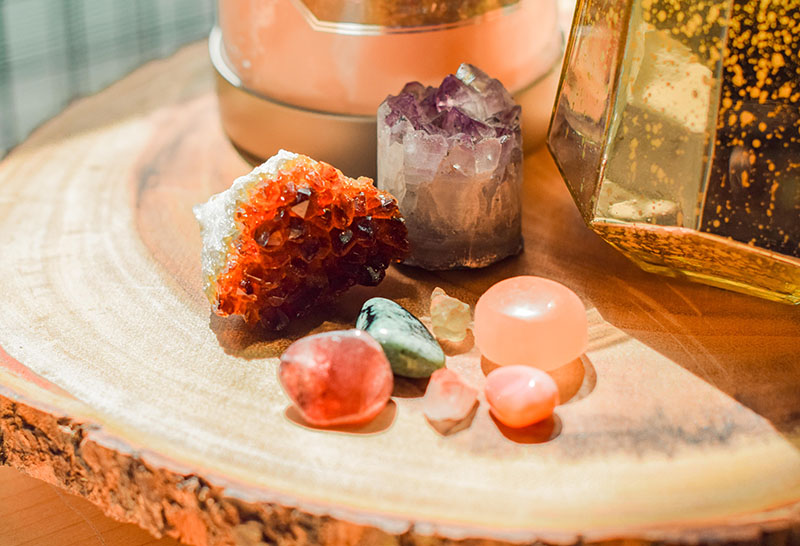Milk Baths Have Been Used For Anti-Aging For Centuries—Here's Why
If you have dry or sensitive skin, you might want to try this.


mbg Assistant Beauty Editor
mbg Assistant Beauty Editor
Hannah Frye is the Assistant Beauty Editor at mindbodygreen. She has a B.S. in journalism and a minor in women’s, gender, and queer studies from California Polytechnic State University, San Luis Obispo. Hannah has written across lifestyle sections including health, wellness, sustainability, personal development, and more.
Image by Javier Pardina / Stocksy November 8, 2022 Our editors have independently chosen the products listed on this page. If you purchase something mentioned in this article, we may Calming irritated and sensitized skin is no easy task. Finding which products help soothe and which ones might instead trigger inflammation can feel like a never-ending hunt. And when it comes to at-home practices like chemical peels or facial tools, you must proceed with caution. Luckily, there is one DIY practice that’s not only safe but actually beneficial for those with dry or sensitive skin. This is one relaxing, spa-like experience you can trust to help your skin and make you feel great. Enter, milk baths.
Advertisement
This ad is displayed using third party content and we do not control its accessibility features.
What are milk baths?
If you haven’t taken a milk bath before, the concept may seem strange at first. But this ritual is anything but new. In fact, some historians note that ancient Roman societies and Cleopatra used to frequent milk baths for the healthy aging skin benefits (don’t worry, more on that to follow).
A milk bath is just as it sounds—a warm bath of water that you pour milk into. This can be liquid milk or powdered, and which kind of milk can vary, though donkey milk was the main player in historical milk baths.
In modern times, many people take milk baths to soothe dry or irritated skin. Especially when it comes to skin conditions like eczema. Any practice that will help moisturize and ease inflammation is generally worth a shot, right? But let's hear what the derms have to say.
Benefits of milk baths:
The benefits of milk baths vary depending on the milk source. For animal milk baths, the benefits come from a blend of ingredients. “Milk contains lactic acid, which is an alpha hydroxy acid that also has humectant properties—that means that it can hydrate the skin and gently exfoliate to soften and smooth the skin,” board-certified dermatologist Hadley King, M.D. tells mbg.
Apart from gently exfoliating, milk can actually hydrate simultaneously thanks to its fat content. “Milk is very soothing and conditioning for the skin, that’s why you’ll see a lot of hand soaps, body soaps, and products made with goats milks because it is super hydrating,” board-certified and renowned esthetician Caela Bulzing tells mbg.
We know that gently exfoliating the skin and replenishing hydration are two important factors when it comes to healthy skin aging—which is probably why these baths have been associated with skin aging throughout history.
Plus, the act of taking a bath in general can be beneficial for the soul, especially if you opt for a spiritual bath. While these won't have practical skin benefits, sometimes doing something for the sake of enjoyment is enough to add it to your beauty routine. (Listen, beauty should be fun.)
For these rituals, you’ll focus on ambiance and intention—think relaxing music, essential oils, chakra work, and taking a moment to reflect. You can read the 101 on spiritual baths here, if you’re curious.
Advertisement
This ad is displayed using third party content and we do not control its accessibility features.
Types of milk to use for your baths:
Like we mentioned, milk baths can use all kinds of milk—both animal and plant-based. There’s a range of benefits to each, so keep reading to find out which one might be best for you.
Cow's milk.
“Milk contains proteins, fats, vitamins, minerals, and lactic acids,” Bulzing says. However in order to reap the maximum benefits from a cow’s milk bath, be sure to use full-fat milk rather than skim.
The fats in milk will help to moisturize your skin, which is essential to pair with gentle exfoliation. When purchasing cow’s milk, try to stick with ethically sourced and eco-friendly milk brands when possible. Or, opt for dairy alternatives to be sure—those to follow.
Advertisement
This ad is displayed using third party content and we do not control its accessibility features.
Goats milk.
Goat milk tends to deliver a more sour taste, thanks to the rich probiotic content1. While this may not necessarily be a major plus for consumption, it is a dream for your skin—as these probiotics will feed your skin’s microbiome.
When your skin’s microbiome is in a healthy state, you’ll have the ability to fight inflammation, protect the skin from environmental stressors, and protect yourself from infection—to a certain extent, of course.
If possible, try to use raw goat milk with little to no preservatives, as preservatives often kill the probiotics that make goat milk so beneficial for topical use. And just as with any dairy milk, do your best to purchase from ethical and eco-friendly brands when possible.
Oat milk.
The best alternative milk to bath in is certainly oat milk—especially if you’re using colloidal oats. “Oatmeal has been used for centuries as a soothing agent to relieve itch and irritation associated with various dry skin conditions,” King says.
What’s more, “It is classified by the FDA as a skin protectant,” she notes. A few specific benefits all backed by research include:
Advertisement
This ad is displayed using third party content and we do not control its accessibility features.
You can either buy your own oat milk or make it at home—here's how.
Coconut milk.
Coconut milk is rich in fats, so it will help to soothe irritated skin and add a thin coat of hydration to the skin while you’re bathing. If you want to supercharge your coconut milk bath, add a bit of coconut oil as well—as it’s been shown to improve skin barrier function in research6.
Advertisement
This ad is displayed using third party content and we do not control its accessibility features.
Rice milk.
How to DIY your milk bath.
To get the most out of your milk bath, you’ll want to do more than just sit in it. Remember the concept of a spiritual bath we mentioned earlier? Now it’s time to call upon that practice. Here’s how to DIY a dreamy, relaxing milk bath.
First things first, you have to choose your milk. Scan the benefits listed above to find one that resonates with your goals and preferences. Remember—you don’t have to use liquid milk if you don’t want to. Any sort of powdered milk will do as well.
And don't worry: You fill the bath with all milk either (that would be a lot of milk to purchase, after all). Most experts recommend adding one to two cups to a full tub.
2.
Add additional ingredients.
To elevate your bath experience, add in some additional ingredients. These could include:
3.
Get your beverage ready.
You’ll want to have a beverage ready by your bath so you don’t have to get out mid-session. You can sip on a soothing chamomile tea, some warm water with lemon, or whatever other beverages make you feel comfortable and at peace.
4.
Turn on soft music or relaxing sounds.
To really encourage relaxation, you’ll want to have all of the senses covered—including sound. Turn on your favorite relaxing music playlist or opt for nature sounds if that’s more your vibe.
You can even lookup sound baths to call upon the powers of sound healing—you can read more about that here.
Now you’ll want to set your intention. Do you want to reflect on any current situations taking up space in your mind? Do you want to practice gratitude? Maybe you simply want to relax and try to quiet your mind. Whatever it is, try to make it clear and come back to it throughout your bath.
“The coat [of milk] on the skin needs to be rinsed off,” Bulzing says. While your skin may absorb some of the nutrients from the ingredients in your bath, you’ll want to make sure the excess is fully rinsed off of your skin.
You can opt to rinse with water only or use a moisturizing body wash. If you’re using animal milk, the latter option may be better to help rid your skin of the scent.
7.
Hydrate to seal in the moisture.
Whether you’re taking a milk bath or an everyday shower, post-rinse hydration is essential. Look for barrier-nurturing ingredients like ceramides, peptides, shea butter, coconut oil, etc.
Not sure where to start? Here are our top clean and natural body lotions for your browsing pleasure.
Cautions.
Milk baths are great for so many reasons, but like anything in skin care, they do come with a list of cautions. Here are a few things to keep in mind:
FAQ
Are milk baths safe for babies?
Always ask your doctor before bathing your baby in milk as certain skin conditions may be impacted. That being said, breast milk baths may be beneficial for some skin conditions—you can read more about those here.
Are milk baths safe for eczema?
King and Bulzing deem milk baths safe for eczema. That being said, milk baths should not be your only remedy for dry or irritated skin, as leave-on topicals are essential as well. Here’s a list of the best products to calm eczema if you want to get started or switch up your topical care.
Are milk baths safe for acne-prone skin?
Due to the lactic acid content in animal milk, it can be beneficial for acne-prone skin. However, it’s best to patch-test this on your skin. If you’re prone to body breakouts, put a bit of milk on the affected area of your skin and rinse it off 30 minutes later. Note any reactions.
The takeaway.
Having dry or sensitive skin can make you feel like there are no safe DIY skin care experiences to try out—however, milk baths are one safe practice you can add to the list. Even if you don’t have sensitive or dry skin, milk baths can be beneficial for anyone. Benefits range depending on the type of milk. In order to get the most out of your bath, call upon intention setting and embrace extra ambiance factors like a calming beverage or healing sounds. Not sure if you have sensitive skin or not? Check out this story to determine your skin type first.

 Tfoso
Tfoso -v1646695196476.jpg?1148x800)
























![Is Your SEO Strategy Built for the AI Era? [Webinar] via @sejournal, @hethr_campbell](https://www.searchenginejournal.com/wp-content/uploads/2025/07/6b-240.png)








